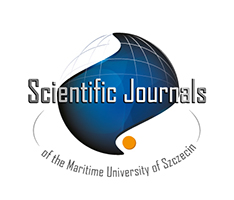The paper should be delivered in .rtf or .doc format. The Editorial Staff of the Scientific Journals reserves the right to modify or shorten the paper as well as to propose changes and corrections in agreement with the author. In case of notable changes and corrections, the paper may be returned to the author to be changed.
All reviews are anonymous - the author does not know the names of the reviewers, and reviewers of the author's name (double-blind review). The paper is given a reference number for future correspondence. The author is notified of the result. The names of the reviewers of the current year are published in the last issue every year. The names of the reviewers cooperating with the magazine is published on the website. Two positive reviews are required for the paper to be published.
Instructions for authors:
- the text must not exceed 10 (ten) and be no shorter than 6 (six) A4 pages. It must be written in Times New Roman (TNR) font, 11 point size, single line spacing, all margins - 2.5 cm;
- table captions, TNR 10 point size, must be centered and placed above tables;
- lettering in tables must be TNR 10 point size;
- figure captions must be centered and placed below figures, TNR 10 point size; the figure descriptions must not be smaller than TNR 9 point size;
- it is forbidden to wrap text around figures and tables;
- each paper must contain a title, abstract and keywords.
Paper layout:
Title of the paper
Name of author(s)
Place of work, full address, e-mail
Abstract (100–250 words)
Keywords (6–10 keywords)
The main text with a separated Introduction (Preface), Main chapters and subchapters, Final conclusion without numbering (Conclusion). Figures and tables: figure lines at least 0.5 pt wide, in at least 300 dpi resolution (additionally provided in a separate file, .tif or .jpg format). The font size for the figure description must be the same throughout the paper, but not bigger than 9. Handwritten descriptions are unacceptable! Wrapping text around figures and tables is forbidden. Tables and figures must be numbered consecutively in order of appearance within the paper. Variables must be written in italics, constants and numbers – no formatting.
Tables in the main text are to be formed as horizontal lines only (for a table header and optionally main sections). Please do not use vertical lines. Example:

Names and technical terms must be defined in the text or in footnotes at first mention. Uniform units of measurement consistent with the SI system should be used. Formulas (equations) must benumbered using Arabic numerals in consecutive order throughout the paper, in parentheses, aligned to the right. Acknowledgements (e.g. information about funding sources) should be located before the reference list. The reference list entries (min. 5 entries) should follow the citation order according to the Harvard Citation Style. The cited references in the text in round brackets: author & year e.g. (Neville, 2010; Kuo & Zhu, 2012). In reference list surnames capitalized, data in order: author(s), year of publication, title, place and publisher name, e.g.:
NEVILLE, C. (2010) The Complete Guide to Referencing and Avoiding Plagiarism. 2nd Ed. Maidenhead: Open University Press.
KUO, W., ZHU, X. (2012) Importance Measures in Reliability, Risk and Optimization. Principles and Applications. Wiley.
How to reference different type of sources

